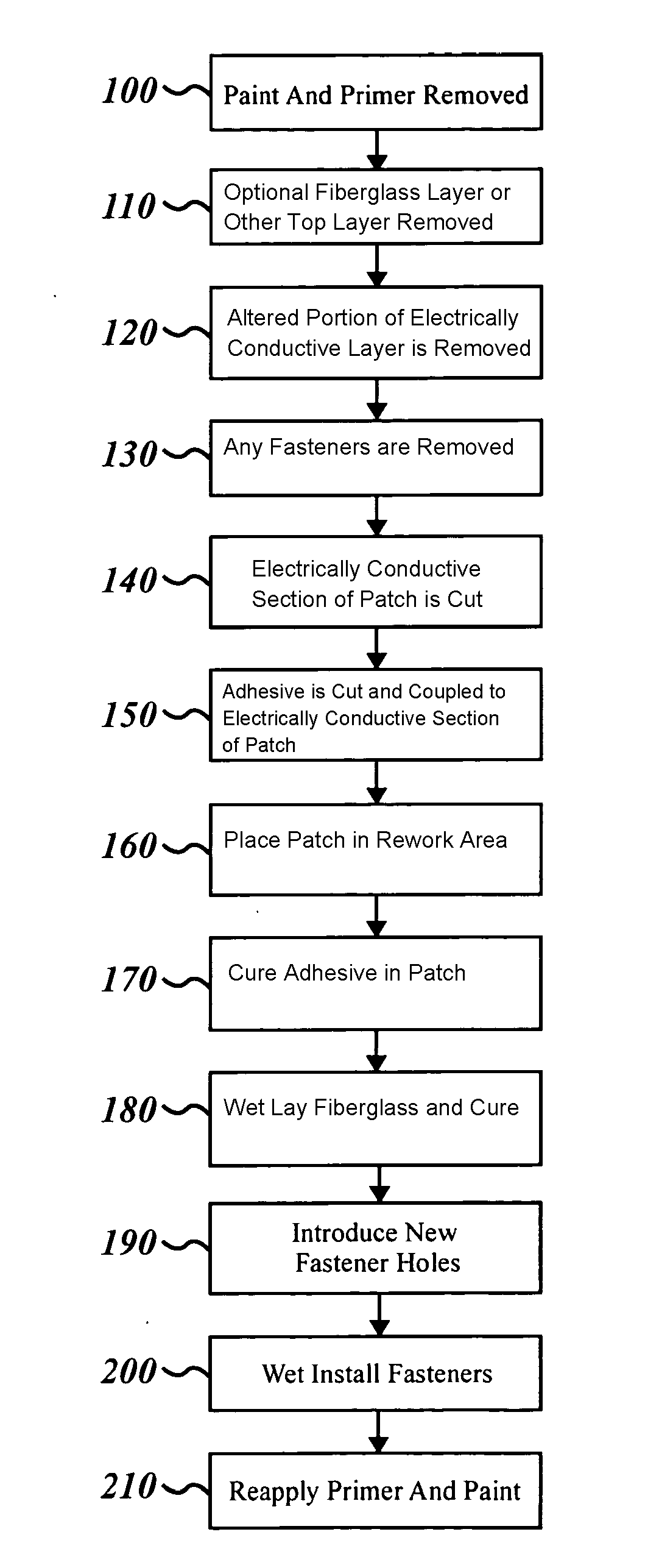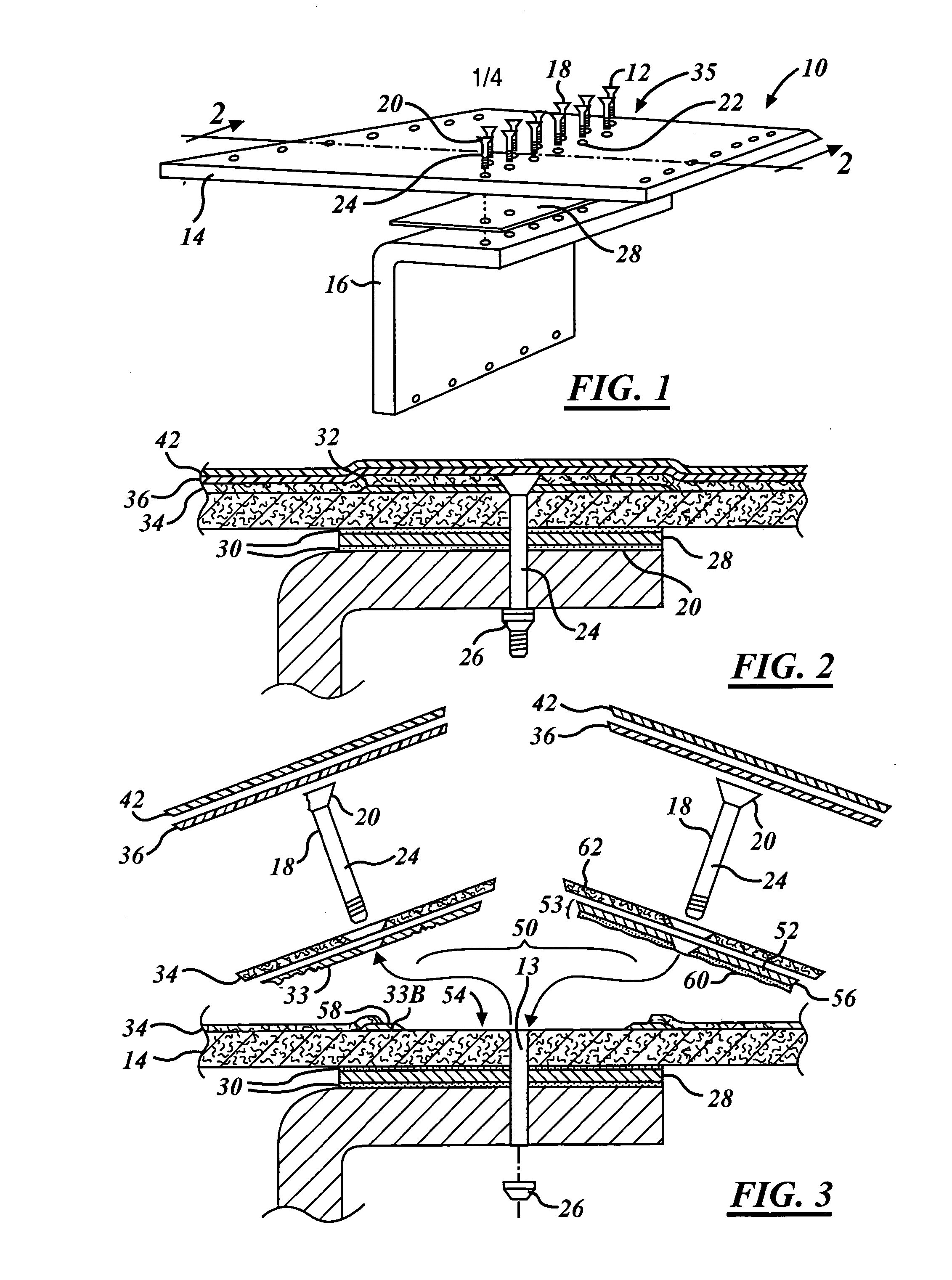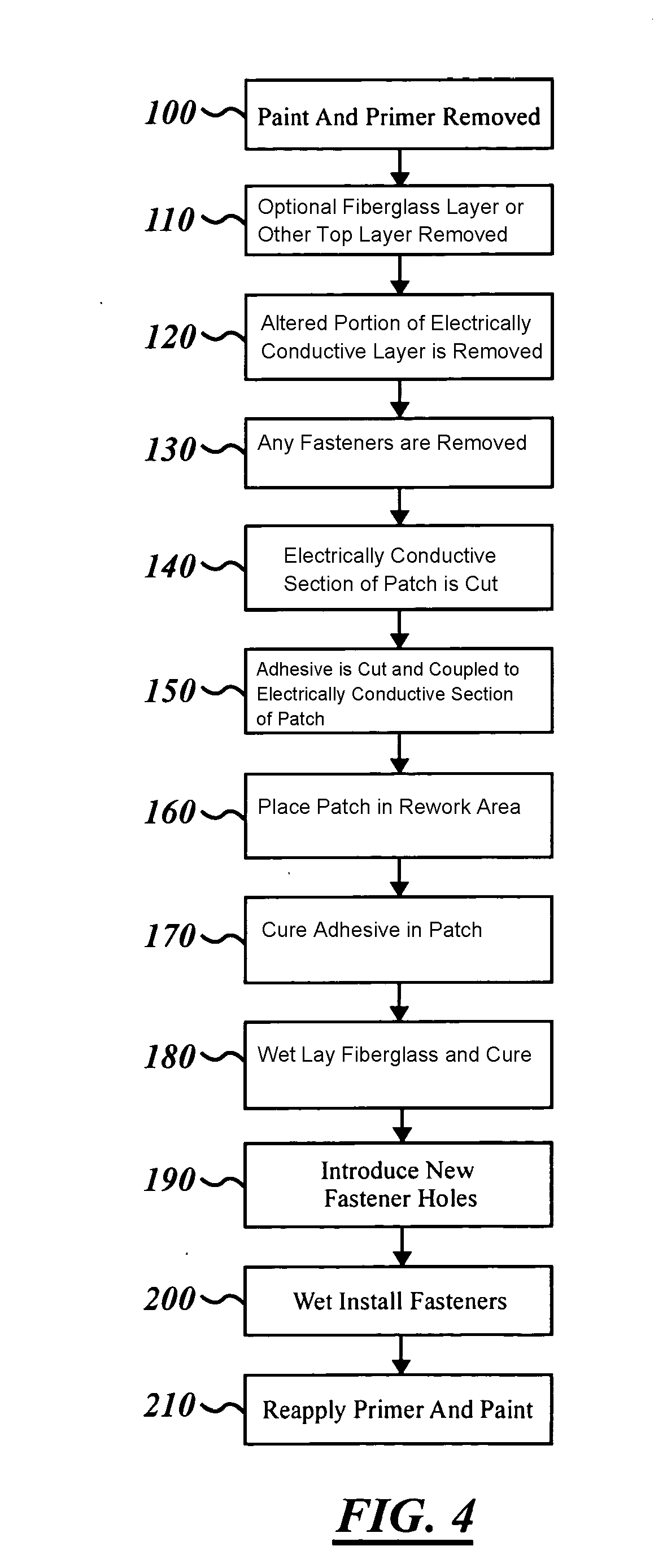Copper grid repair technique for lightning strike protection
a technology of copper grid and composite aircraft skin, which is applied in the direction of thin material processing, aircraft maintenance, lamination ancillary operations, etc., can solve the problems of increasing the potential difference produced across the ply structure, arcing, sparks and other unwanted effects, and no readily available electrically conductive path for discharging current, etc., to achieve the effect of reducing the chance of arcing or sparks, reducing current density through fasteners, and vastly reducing the chance o
- Summary
- Abstract
- Description
- Claims
- Application Information
AI Technical Summary
Benefits of technology
Problems solved by technology
Method used
Image
Examples
Embodiment Construction
[0021]The methods for reworking an altered aircraft composite structure having an electrically conductive layer will now be described in the context of a composite aircraft wing 10, whose structure will be described below, with respect to FIGS. 1 and 2. However, nothing in this disclosure should be construed to limit this method to an aircraft wing 10. It should be understood that the method can be applied to other structures, as one of ordinary skill in the art would recognize.
[0022]Referring now to FIGS. 1 and 2, a section and perspective view of a portion of a wing structure 10 of an aircraft showing a plurality of fasteners 12 is shown securing a skin panel 14 of an aircraft structure to an inner substructure or spar 16, comprising the wall of a fuel tank (not shown).
[0023]The skin panel 14 and the spar 16 are made of carbon fiber composite material of low weight and high strength and stiffness formed by conventional methods well known in the art. For example, in one preferred f...
PUM
| Property | Measurement | Unit |
|---|---|---|
| Temperature | aaaaa | aaaaa |
| Length | aaaaa | aaaaa |
| Length | aaaaa | aaaaa |
Abstract
Description
Claims
Application Information
 Login to View More
Login to View More - R&D
- Intellectual Property
- Life Sciences
- Materials
- Tech Scout
- Unparalleled Data Quality
- Higher Quality Content
- 60% Fewer Hallucinations
Browse by: Latest US Patents, China's latest patents, Technical Efficacy Thesaurus, Application Domain, Technology Topic, Popular Technical Reports.
© 2025 PatSnap. All rights reserved.Legal|Privacy policy|Modern Slavery Act Transparency Statement|Sitemap|About US| Contact US: help@patsnap.com



